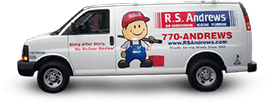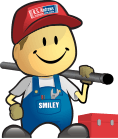Main Sewer Issues: Clogs, Causes, Warning Signs & Replacement Options
As a homeowner, you might not think about your main sewer line very often, but it plays a crucial role in keeping your home running smoothly. If your main sewer line experiences a problem, it can lead to serious issues such as sewage backups, water damage, and expensive repairs.
Here we will discuss how to maintain your main sewer line, how to prevent main sewer line clogs, warning signs of a sewer line problem, and how video camera inspections can help diagnose problems with your main sewer line.
We will also cover tree roots as a common cause of main sewer line clogs, flushed objects and how they create blockages in the sewer line, replacement options for main sewer lines, and how to choose the right plumber for all your plumbing needs.
Causes of Main Sewer Line Clogs
There are several common causes of clogs in main sewer lines. A few of these include:
- Tree roots are a common cause of clogs, as they can infiltrate the sewer line and cause blockages.
- Food particles or grease poured down the sink ends up in drain pipes and can cause a blockage when it solidifies.
- Flushed objects such as wipes, sanitary products, and paper towels can also create blockages in the sewer line.
- Aging pipes can also cause blockages in the sewer line as they are prone to rust and corrosion.
Warning Signs of a Main Sewer Line Problem
When it comes to maintaining a healthy and functional home, keeping an eye on your main sewer line is crucial. A main sewer line problem can cause extensive damage, and expensive repairs, and can be a significant inconvenience. Being able to recognize the warning signs early on can save you time, money, and stress. Here are some key indicators that your main sewer line may be experiencing issues:
- Slow draining: One of the first signs of a main sewer line problem is slow draining in multiple fixtures. If you notice that your sinks, bathtubs, and toilets are all draining slowly, it may indicate a clog or obstruction in the main sewer line.
- Unpleasant odors: A foul smell coming from your drains, particularly from toilets and sinks, can be a warning sign of a sewer line issue. Sewer gas escaping from the line can cause these unpleasant odors, which could indicate a break or clog in the pipe.
- Frequent backups: If you’re experiencing frequent toilet backups or water backing up into your sinks or bathtubs, this could be a sign that your main sewer line is clogged or damaged.
- Gurgling noises: Hearing gurgling sounds coming from your drains, especially after using the toilet, could be a sign of a sewer line problem. This noise may indicate trapped air in the pipes due to a blockage or break in the sewer line.
- Lush patches in your yard: If you notice that areas of your lawn are particularly lush and green, it could be a sign that your main sewer line is leaking. Sewage acts as a natural fertilizer, causing the grass to grow more rapidly in the affected area.
- Pools of standing water: Sewer line leaks can cause pools of standing water to form in your yard. If you notice unexplained wet spots or puddles, it’s essential to investigate the cause and address any sewer line issues promptly.
- Foundation damage: A severely damaged sewer line can lead to foundation problems in your home. If you notice cracks in your foundation or an uneven settling of your house, it could be a sign of a major sewer line issue.
- Infestations of pests: Rodents and insects are attracted to the smell of sewage. If you notice an increase in pests around your home, it could be due to a sewer line problem.
Replacement Options for Main Sewer Lines
When it comes to main sewer line issues, sometimes repairs are simply not enough to fix the problem. In these cases, a full replacement of the main sewer line may be necessary. Here are some replacement options to consider:
Traditional Excavation
The traditional method of replacing a main sewer line is through excavation. This involves digging up the old sewer line and installing a new one. While it is the most invasive and time-consuming option, it is also the most thorough and allows for complete access to the sewer line.
Trenchless Pipe Lining
Trenchless pipe lining is a newer method that involves inserting a new pipe lining into the existing damaged sewer line. This can be done with minimal excavation and is a faster and less disruptive option compared to traditional excavation.
Pipe Bursting
Pipe bursting is another trenchless method that involves breaking up the old sewer line and replacing it with a new one without having to dig up the old pipe. A machine pulls a new pipe through the old pipe, breaking up the old pipe as it goes.
When considering replacement options for your main sewer line, it is important to consult with a professional plumber who can assess the situation and recommend the best option for your specific needs. Keep in mind that replacement can be a significant investment, but it is often necessary for the long-term health and functionality of your home’s plumbing system.
Pipe Lining
Pipe lining is a popular method of replacing a main sewer line without having to dig up the existing pipes. It involves inserting a flexible tube, also known as a liner, into the existing sewer line. This liner is coated with a special resin that hardens and creates a new pipe within the existing one. This method is also referred to as cured-in-place pipe (CIPP) lining.
Pipe lining offers several benefits as a replacement option for main sewer lines. For one, it is less invasive than traditional sewer line replacement methods that require digging up the yard or even the street. This means less disruption to your daily routine, less damage to your property, and less mess overall. Additionally, pipe lining is often less expensive than traditional methods, making it a more cost-effective option for many homeowners.
Preventing Sewer Line Problems
Sewer lines are an essential part of any home’s plumbing system, but they often get neglected until a problem arises. As a homeowner, it’s important to take preventative measures to protect your sewer lines from damage, clogs, and backups. In this article, we’ll discuss some practical tips for protecting your sewer lines and avoiding costly repairs.
Be Mindful of What Goes Down the Drain
One of the most effective ways to protect your sewer lines is to be mindful of what you’re flushing down the drain. Avoid flushing anything that is not meant to go down the toilet, such as paper towels, baby wipes, feminine hygiene products, and cooking grease. These items can easily create blockages in your sewer lines and cause backups.
Install a Backwater Valve
Installing a backwater valve is another way to protect your sewer lines from damage. A backwater valve is a device that prevents wastewater from flowing back into your home in the event of a sewer line backup. This can be particularly important if you live in an area that is prone to heavy rainfall or flooding.
Schedule Regular Sewer Line Inspections
Regular sewer line inspections can help identify any potential issues before they become major problems. A professional plumber can use a camera to inspect your sewer lines for signs of damage, clogs, or tree roots that may be invading the pipes. Catching these issues early on can help you avoid costly repairs down the road.
Practice Good Landscaping Habits
Believe it or not, your landscaping habits can also impact the health of your sewer lines. Planting trees and shrubs too close to your sewer lines can cause roots to grow into the pipes, creating blockages and damaging the pipes. Make sure to plant trees and shrubs at least 10 feet away from your sewer lines to prevent this from happening.
Avoid Chemical Drain Cleaners
While it may be tempting to use a chemical drain cleaner to clear a clogged drain, these products do more harm than good. They can corrode your pipes over time and create weak spots that can lead to leaks and cracks. Instead, use a plunger or a drain snake to clear minor clogs, or call a professional plumber for more serious clogs.
Professional Sewer Line Cleaning, Repair, and Replacement
Maintaining and protecting your main sewer line is crucial for the health and safety of your home. It is important to take preventative measures such as avoiding flushing objects down the toilet and monitoring the health of nearby trees. However, even with proper maintenance, issues can still arise. It is important to be aware of the warning signs and to contact a professional plumber for a main sewer line camera inspection.
R.S. Andrews offers a range of solutions for sewer line issues, including repair and replacement options. Contact us today to ensure the health and longevity of your home’s plumbing system.





